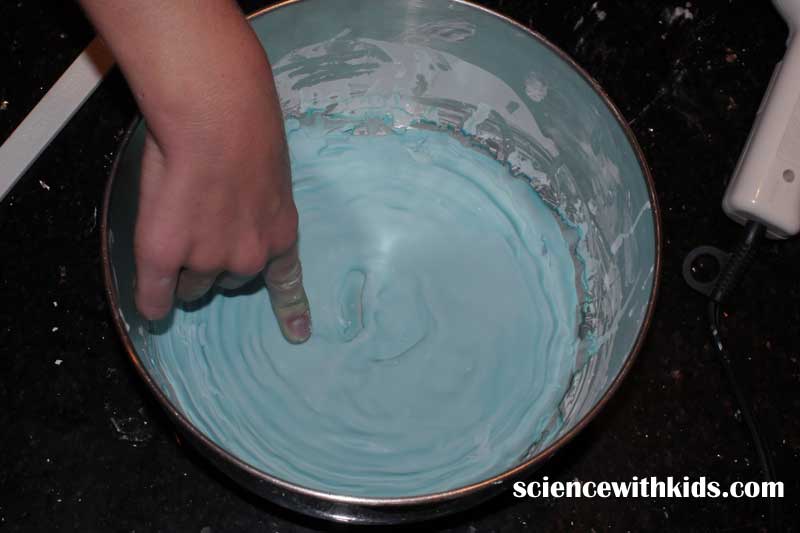
4
DifficultyOobleck Science Experiment - Adding Heat to a Non-Newtonian Fluid
Posted by Admin / in Matter Experiments
In this material experiment we will show how to make Oobleck. Oobleck is a non-Newtonian fluid, which is not a quite a solid or a liquid, but behaves like both states of matter. We will experiment with the Oobleck by demonstrating how it acts like a solid and a liquid. We will also heat the Oobleck to find out what happens. Will the Oobleck become a solid or a liquid when heat is applied?
Materials Needed
- Large bowl
- Measuring cup
- 1/2 Cup of water
- 1 Cup of corn starch (powder)
- Spatula
- Food coloring - Optional
- Hair dryer
- Timer
- Large coin (quarter or pound)
EXPERIMENT STEPS
Step 1: Using the measuring cup, measure one cup of corn starch powder into a large mixing bowl.
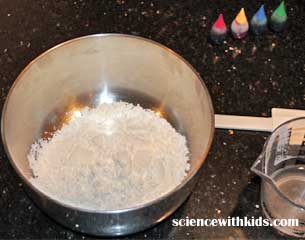
Pour one cup of corn starch into the mixing bowl
Step 2: Measure 1/2 cup of water into the measuring cup.
Step 3: If wanted, add 4-5 drops of food coloring to the water. This step is optional. Adults must decide if food coloring is used. Food coloring can stain clothing and skin.
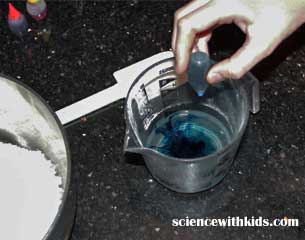
Optional: Add food color to the water for colored Oobleck
Step 4: Pour 2/3 of the water into the corn starch powder in the mixing bowl. Mix together with the spatula until all the water is mixed with the corn starch. Slowly add the last portion of water to the mix until the corn starch is no longer a powder, but looks more like a consistent material. Do not add too much water during this step. If the mix looks too much like a liquid, add more corn starch.
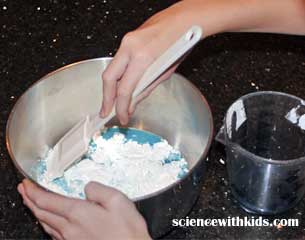
Add water and mix the Oobleck
Step 5: You now have Oobleck! This is a non-Newtonian material. Try shaping the material into a ball. It behaves like a solid. Now allow the Oobleck to drip back into the bowl. It behaves like a liquid.
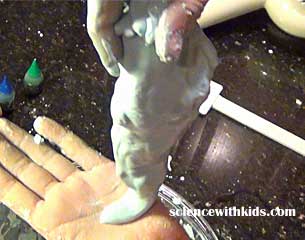
Watch a solid flow with this experiment
Step 6: Put the Oobleck back into the bottom of the mixing bowl and smooth it out using the spatula.
Step 7: Smooth the material out in the bottom of the bowl. Drop a coin flat on the top of the mixture. See how the Oobleck does not splash. What happened to the coin?
Step 8: Using a hair dryer, heat the Oobleck for four minutes. What does the Obleck look like now? Does the Oobleck still act like a non-Newtonian material or is it more like a solid or liquid?
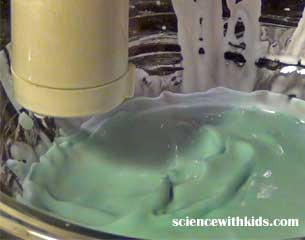
Heating a non-Newtonian material
Step 9: Slowly add water back into the mixture until it acts like the Oobleck mixed in Step 4. You have Oobleck again!
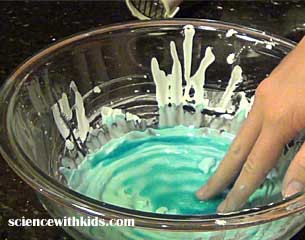
Add water to have Oobleck again
SCIENCE LEARNED
A non-Newtonian material is defined as a material that behaves like both a solid and a liquid. It has viscosity that changes. When the non-Newtonian material is contained it looks and feels like a solid, particularly when force is applied quickly to the material. When the Oobleck is not contained or force is applied slowly, it behaves like a liquid. Oddly, when the Oobleck dries to the side of the mixing bowl, it is somewhat difficult to remove the hard pieces from the bowl. When these pieces are combined, however, they will flow right out of your hand. How would this type of material be used today? If we try painting a house, there is a benefit to having lquid paint when it is applied. When the paint dries, we want paint that changes to a solid so it does not run off the walls. Are there other times when having a material that changes from a liquid to a solid is a benefit?
Heating the Oobleck changed it from a non-Newtonian fluid back to a solid. Removing the water from Oobleck stopped the material from flowing. Adding water back into the mixture, however, returned the material back into a non-Newtonian material. As we can see, adding moderate levels of heat does not permanently change the atoms in the material. The heat simply dries the mixture so there is no water to allow it to flow.
-
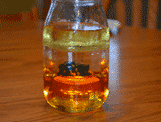
3
DifficultyLiquid Density Experiment
Experiment with the density of different types of liquids.
-
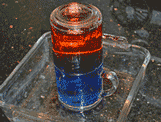
3
DifficultyHot and Cold Water Density
Use this simple experiment to demonstrate hot and cold water density..
-
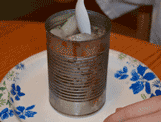
2
DifficultyWater Cycle Experiment
Experiment to show all the phases of the water cycle.
